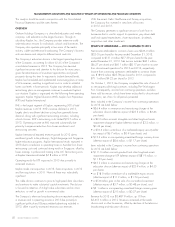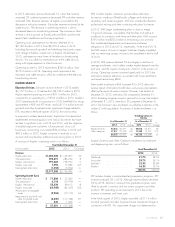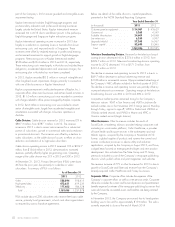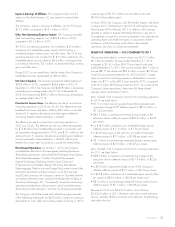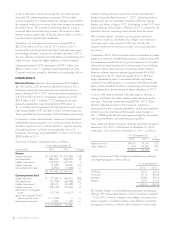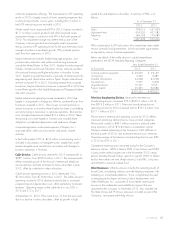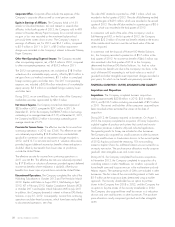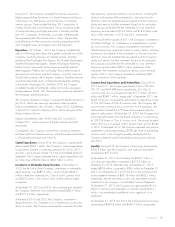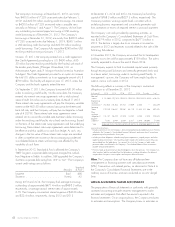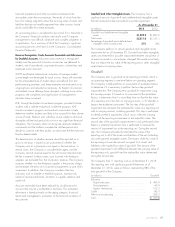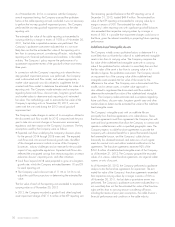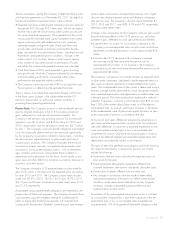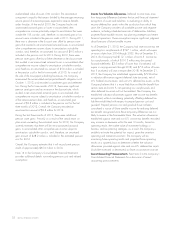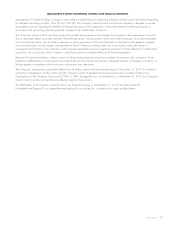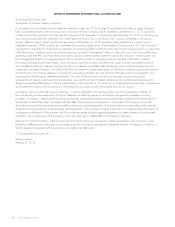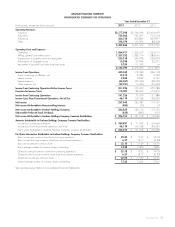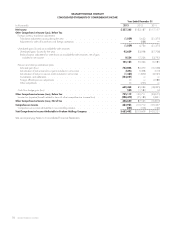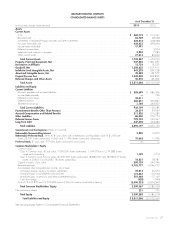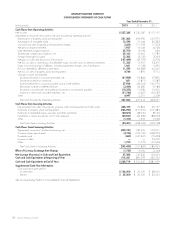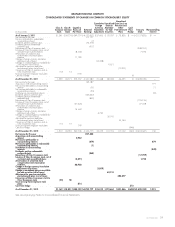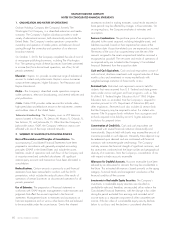Washington Post 2013 Annual Report Download - page 68
Download and view the complete annual report
Please find page 68 of the 2013 Washington Post annual report below. You can navigate through the pages in the report by either clicking on the pages listed below, or by using the keyword search tool below to find specific information within the annual report.As of November 30, 2013, in connection with the Company’s
annual impairment testing, the Company assessed the qualitative
factors at the cable reporting unit and concluded it was not necessary
to perform the two-step goodwill impairment process. The Company
performed the two-step goodwill impairment process at the other
reporting units.
The estimated fair value of the cable reporting unit exceeded its
carrying value by a margin in excess of 100% as of November 30,
2011, the last date a quantitative review was performed. The
Company’s qualitative assessment indicated that it is not more
likely than not that the estimated fair value of the reporting unit is
less than its carrying amount, considering all factors, including the
reporting unit’s financial performance and conditions in the cable
industry. The Company’s policy requires the performance of a
quantitative impairment review of the goodwill at least once every
three years.
In connection with the Company’s reporting units where the two-
step goodwill impairment process was performed, the Company
used a discounted cash flow model, and where appropriate, a
market value approach was also utilized to supplement the dis-
counted cash flow model to determine the estimated fair value of its
reporting units. The Company made estimates and assumptions
regarding future cash flows, discount rates, long-term growth rates
and market values to determine each reporting unit’s estimated
fair value. The methodology used to estimate the fair value of the
Company’s reporting units on November 30, 2013, was con-
sistent with the one used during the 2012 annual goodwill
impairment test.
The Company made changes to certain of its assumptions utilized in
the discounted cash flow models for 2013 compared with the prior
year to take into account changes in the economic environment,
regulations and their impact on the Company’s businesses. The key
assumptions used by the Company were as follows:
• Expected cash flows underlying the Company’s business plans
for the periods 2014 through 2018 were used. The expected
cash flows took into account historical growth rates, the effect
of the changed economic outlook at some of the Company’s
businesses, industry challenges and an estimate for the possible
impact of any applicable regulations. Expected cash flows also
reflected the anticipated savings from restructuring plans at certain
education division’s reporting units, and other initiatives.
• Cash flows beyond 2018 were projected to grow at a long-term
growth rate, which the Company estimated between 1% and 3%
for each reporting unit.
• The Company used a discount rate of 11.0% to 13.5% to risk
adjust the cash flow projections in determining the estimated fair
value.
The fair value of each of the reporting units exceeded its respective
carrying value as of November 30, 2013.
In 2012, the Company recorded a goodwill and other long-lived
asset impairment charge of $111.6 million at the KTP reporting unit.
The remaining goodwill balance at the KTP reporting unit as of
December 31, 2013, totaled $49.9 million. The estimated fair
value of the KTP reporting unit exceeded its carrying value by a
margin in excess of 50%. The estimated fair value of the
Company’s other reporting units with significant goodwill balances
also exceeded their respective carrying values by a margin in
excess of 50%. It is possible that impairment charges could occur in
the future, given the inherent variability in projecting future operating
performance.
Indefinite-Lived Intangible Assets
The Company initially assess qualitative factors to determine if it is
more likely than not that the fair value of its indefinite-lived intangible
assets is less than its carrying value. The Company compares the
fair value of the indefinite-lived intangible asset with its carrying
value if the qualitative factors indicate it is more likely than not that
the fair value of the asset is less than its carrying value or if it
decides to bypass the qualitative assessment. The Company records
an impairment loss if the carrying value of the indefinite-lived
intangible assets exceeds the fair value of the assets for the
difference in the values. The Company uses a discounted cash flow
model, and in certain cases, a market value approach is
also utilized to supplement the discounted cash flow model to
determine the estimated fair value of the indefinite-lived intangible
assets. The Company makes estimates and assumptions regarding
future cash flows, discount rates, long-term growth rates and other
market values to determine the estimated fair value of the indefinite-
lived intangible assets.
The Company’s intangible assets with an indefinite life are
principally from franchise agreements at its cable division. These
franchise agreements result from agreements the Company has with
state and local governments that allow the Company to contract and
operate a cable business within a specified geographic area. The
Company expects its cable franchise agreements to provide the
Company with substantial benefit for a period that extends beyond
the foreseeable horizon, and the Company’s cable division
historically has obtained renewals and extensions of such agree-
ments for nominal costs and without material modifications to the
agreements. The franchise agreements represent 92% of the
$541.3 million of indefinite-lived intangible assets of the Company
as of December 31, 2013. The Company grouped the recorded
values of its various cable franchise agreements into regional cable
systems or units of account.
As of November 30, 2013, the Company performed a qualitative
analysis to test the franchise agreements for impairment. The esti-
mated fair value of the Company’s franchise agreements exceeded
their respective carrying values by a margin in excess of 50% as
of November 30, 2011, the last date a quantitative review was
performed. The Company’s qualitative assessment indicated that it is
not more likely than not that the estimated fair value of the franchise
rights are less than its carrying amount considering all factors,
including the review of prior year assumptions, the cable division’s
financial performance and conditions in the cable industry.
50 GRAHAM HOLDINGS COMPANY


